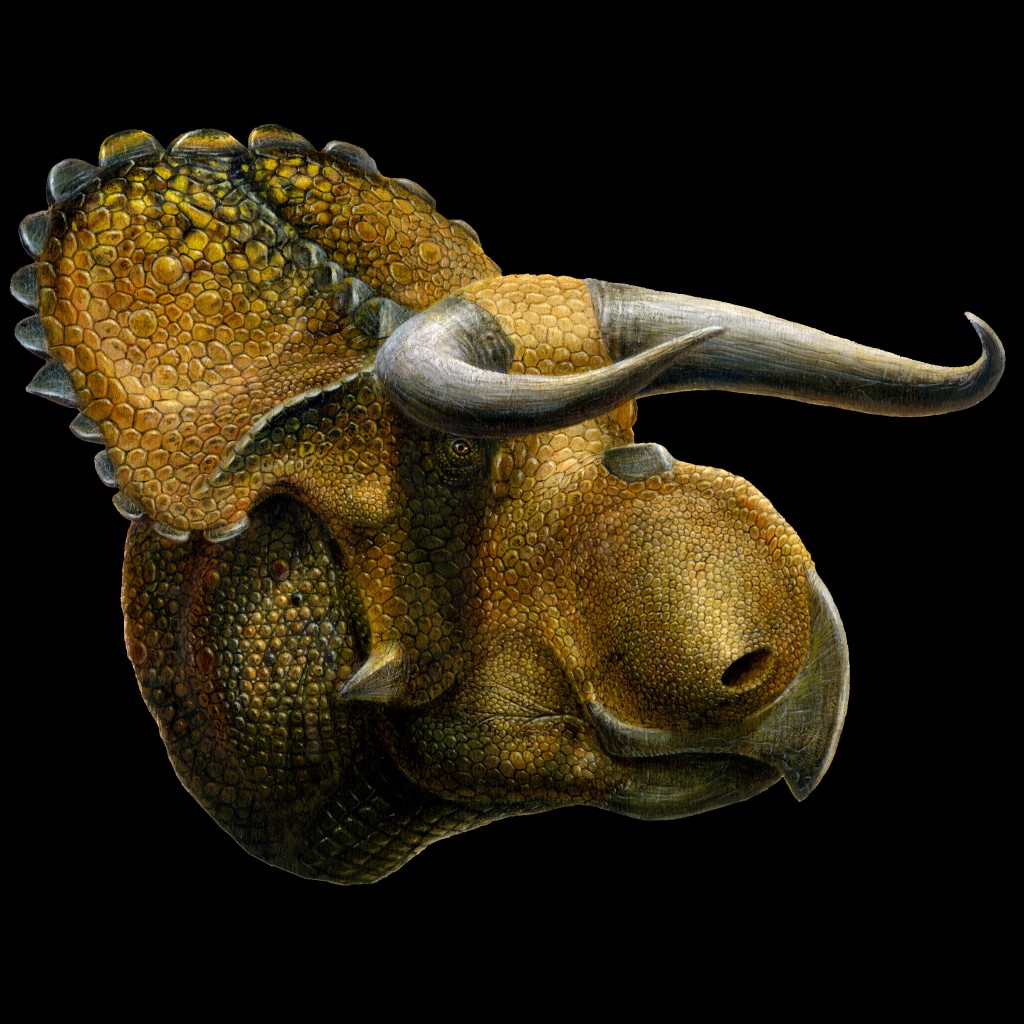Science News
What's in a Nose...?
July 18, 2013
by Molly Michelson

What’s in a nose—er, I mean, a name? For the newly described dinosaur, Nasutoceratops titusi, a great, big, honking lot!
Nasutoceratops means “big-nose horned face” and indeed this Triceratops relative is mostly nose. Having a “Jimmy Durante profile,” claims National Geographic’s Phenomena blog. And ScienceNOW says, “Does it sometimes seem that dinosaurs were competing with each other to see who could look the wackiest?”
Behind that nose is a familiar-looking dinosaur, with a huge skull bearing a single horn over the nose, one horn over each eye, and an elongate, bony frill at the rear, like other ceratopsids.
Unearthed in Grand Staircase-Escalante National Monument in southern Utah, the huge plant-eater inhabited swampy Laramidia, a landmass formed when a shallow sea flooded the central region of North America, isolating the western and eastern portions of the continent for millions of years during the Late Cretaceous Period.
“Nasutoceratops is one of a recent landslide of ceratopsid discoveries, which together have established these giant plant-eaters as the most diverse dinosaur group on Laramidia,” says Andrew Farke of the Raymond M. Alf Museum of Paleontology.
And while other ceratopsid fossils in Laramidia have raised questions about whether the specimens represent separate species or instead illustrate the differences between the juveniles and adults of a single species (see our video on that topic), Nasutoceratops titusi is not just a separate species, it’s from an entirely different group (read this article in Nature News to learn more).
So why the distinctive nose? Even scientists can’t sniff this one out. “The jumbo-sized schnoz of Nasutoceratops likely had nothing to do with a heightened sense of smell—since olfactory receptors occur further back in the head, adjacent to the brain—and the function of this bizarre feature remains uncertain,” according to Scott Sampson of the Denver Museum of Nature & Science.
The findings are published this week in the Proceedings of the Royal Society B.
Image by Lukas Panzarin